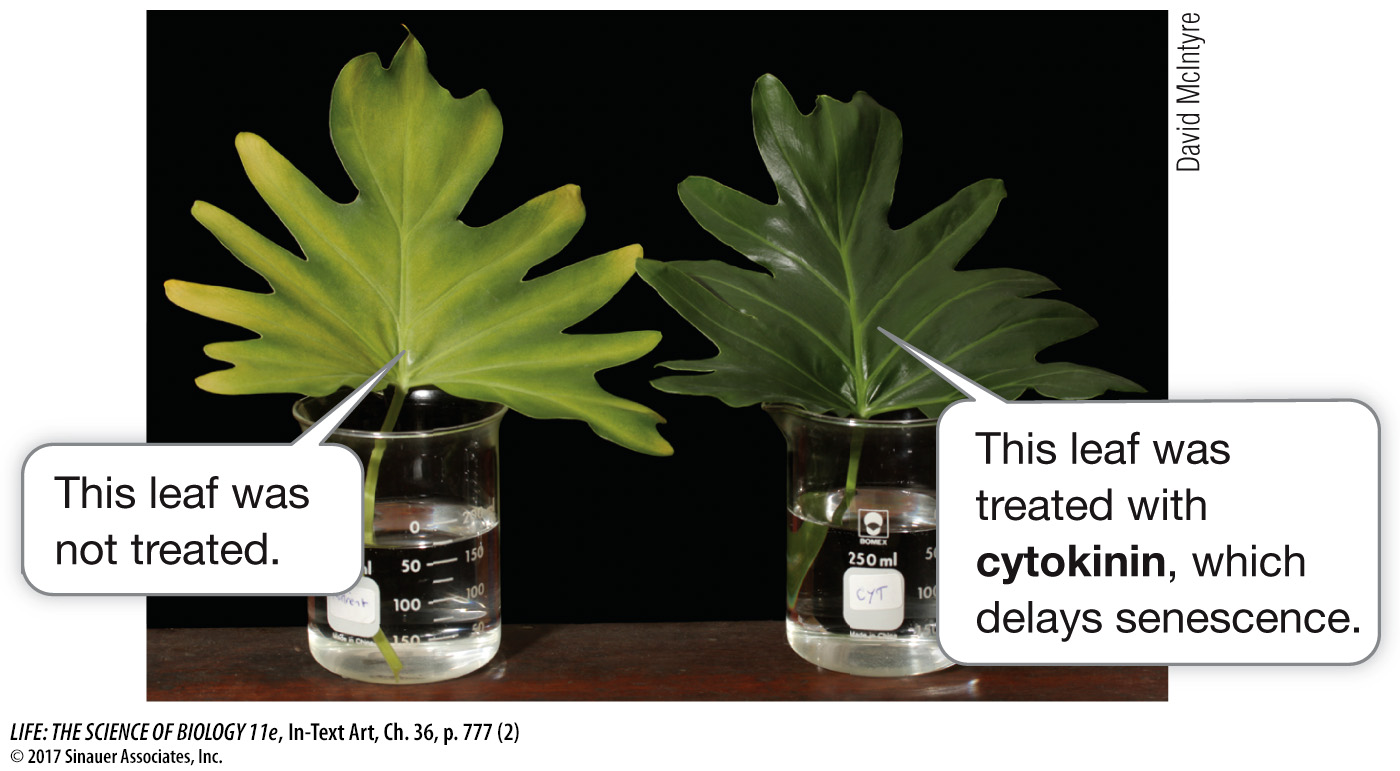Cytokinins are active from seed to senescence
Like bacteria and yeasts, plant cells such as parenchyma cells can be grown in a liquid or solidified growth medium containing sugars and salts. The cells will divide continuously until they run out of nutrients. In the early days of plant cell culturing, scientists experimented with many supplements to determine the optimal chemical environment for growth. The best supplement was coconut milk, the fluid that surrounds the developing embryo in coconut fruit. Investigators suspected that a molecule in the fluid must stimulate plant cell division.
A clue to the identity of the molecule came when Folke Skoog at the University of Wisconsin tested various pure substances that might substitute for coconut milk. DNA was among the substances tested, and it did not work; however, heating DNA at high pressure in an autoclave produced a mixture that strongly promoted plant cell division. A derivative of adenine called kinetin was identified as the active ingredient. Because it stimulated cell division (cytokinesis), it was called a cytokinin.
Kinetin does not exist in cells, but it gave scientists a hint as to what type of molecule might be the active ingredient in coconut milk. An adenine derivative called zeatin was extracted from corn endosperm, and since then more than 150 different cytokinins have been isolated, and most are derivatives of adenine.
Cytokinins (see Table 36.2) have several different effects, in many cases interacting with auxin:
Adding an appropriate combination of auxin and cytokinins to a growth medium induces rapid proliferation of cultured plant cells.
Cytokinins can cause certain light-
requiring seeds to germinate even when kept in constant darkness. In plant cell cultures, a high cytokinin-
to- auxin ratio promotes the formation of shoots; a low ratio promotes the formation of roots. Cytokinins usually inhibit the elongation of stems, but they cause lateral swelling of stems and roots (the fleshy roots of radishes are an extreme example).
Cytokinins stimulate axillary buds to grow into branches; the auxin-
to- cytokinin ratio controls the extent of branching (bushiness) of a plant. A lower ratio promotes more branching. Cytokinins delay the senescence of leaves. If leaf blades are detached from a plant and placed in water or a nutrient solution, they quickly turn yellow and show other signs of senescence. If instead they are placed in a solution containing a cytokinin, they remain green and senesce much more slowly. Roots contain abundant cytokinins, and cytokinin transport to the leaves delays senescence.
